Zhengsu Chen
Visformer: The Vision-friendly Transformer
Apr 27, 2021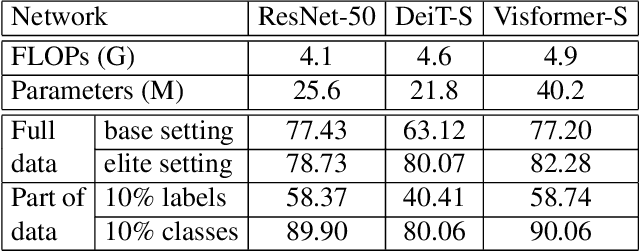
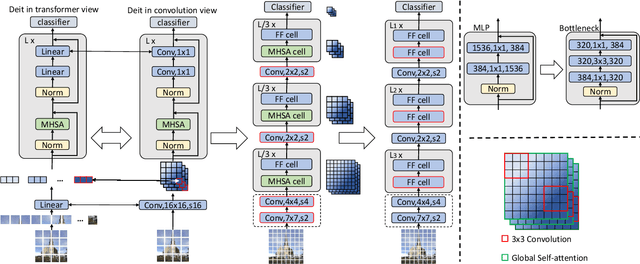

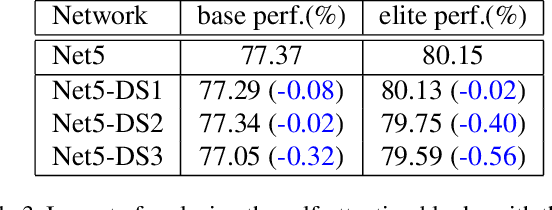
Abstract:The past year has witnessed the rapid development of applying the Transformer module to vision problems. While some researchers have demonstrated that Transformer-based models enjoy a favorable ability of fitting data, there are still growing number of evidences showing that these models suffer over-fitting especially when the training data is limited. This paper offers an empirical study by performing step-by-step operations to gradually transit a Transformer-based model to a convolution-based model. The results we obtain during the transition process deliver useful messages for improving visual recognition. Based on these observations, we propose a new architecture named Visformer, which is abbreviated from the `Vision-friendly Transformer'. With the same computational complexity, Visformer outperforms both the Transformer-based and convolution-based models in terms of ImageNet classification accuracy, and the advantage becomes more significant when the model complexity is lower or the training set is smaller. The code is available at https://github.com/danczs/Visformer.
SelectScale: Mining More Patterns from Images via Selective and Soft Dropout
Nov 30, 2020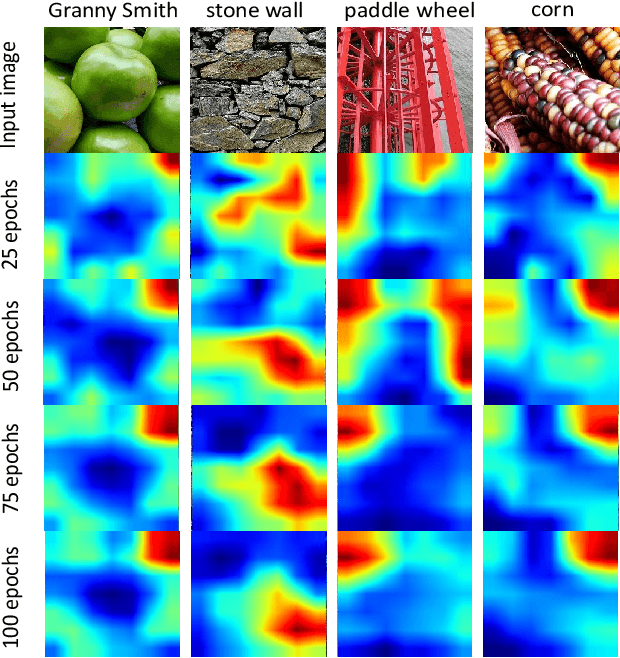



Abstract:Convolutional neural networks (CNNs) have achieved remarkable success in image recognition. Although the internal patterns of the input images are effectively learned by the CNNs, these patterns only constitute a small proportion of useful patterns contained in the input images. This can be attributed to the fact that the CNNs will stop learning if the learned patterns are enough to make a correct classification. Network regularization methods like dropout and SpatialDropout can ease this problem. During training, they randomly drop the features. These dropout methods, in essence, change the patterns learned by the networks, and in turn, forces the networks to learn other patterns to make the correct classification. However, the above methods have an important drawback. Randomly dropping features is generally inefficient and can introduce unnecessary noise. To tackle this problem, we propose SelectScale. Instead of randomly dropping units, SelectScale selects the important features in networks and adjusts them during training. Using SelectScale, we improve the performance of CNNs on CIFAR and ImageNet.
Weight-Sharing Neural Architecture Search: A Battle to Shrink the Optimization Gap
Aug 05, 2020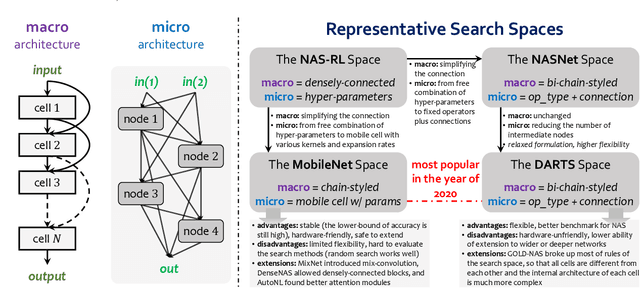
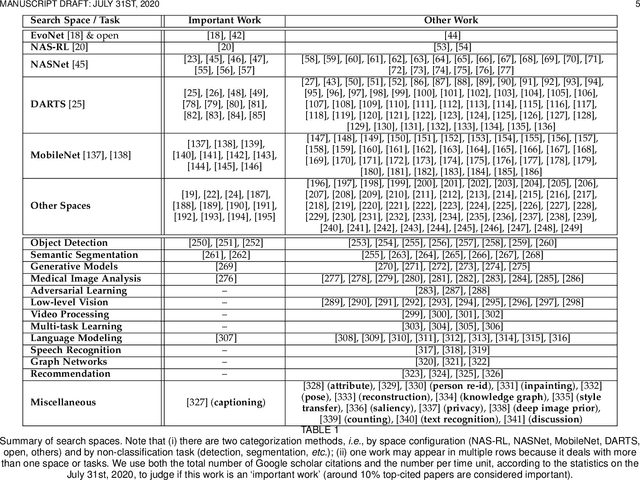

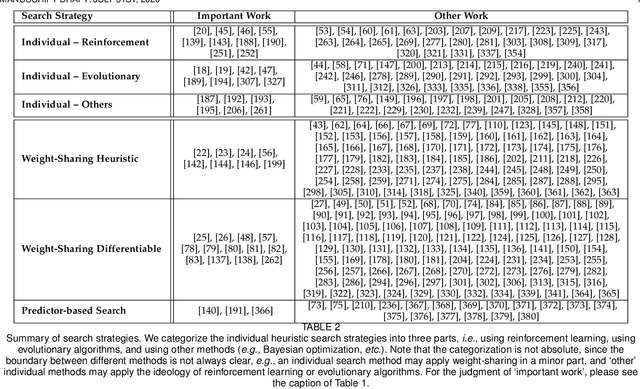
Abstract:Neural architecture search (NAS) has attracted increasing attentions in both academia and industry. In the early age, researchers mostly applied individual search methods which sample and evaluate the candidate architectures separately and thus incur heavy computational overheads. To alleviate the burden, weight-sharing methods were proposed in which exponentially many architectures share weights in the same super-network, and the costly training procedure is performed only once. These methods, though being much faster, often suffer the issue of instability. This paper provides a literature review on NAS, in particular the weight-sharing methods, and points out that the major challenge comes from the optimization gap between the super-network and the sub-architectures. From this perspective, we summarize existing approaches into several categories according to their efforts in bridging the gap, and analyze both advantages and disadvantages of these methodologies. Finally, we share our opinions on the future directions of NAS and AutoML. Due to the expertise of the authors, this paper mainly focuses on the application of NAS to computer vision problems and may bias towards the work in our group.
A Survey on Domain Knowledge Powered Deep Learning for Medical Image Analysis
Apr 28, 2020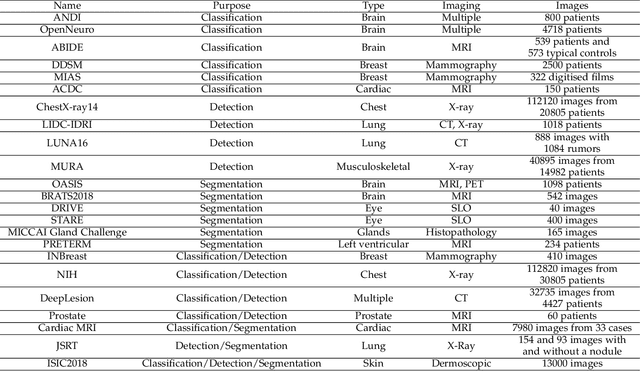
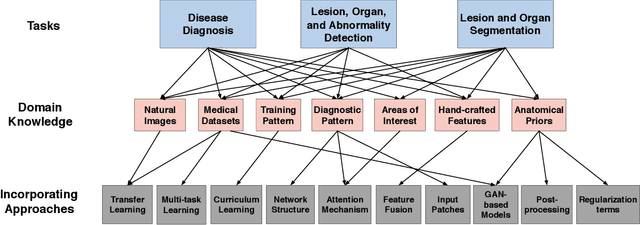


Abstract:Although deep learning models like CNNs have achieved a great success in medical image analysis, small-sized medical datasets remain to be the major bottleneck in this area. To address this problem, researchers start looking for external information beyond the current available medical datasets. Traditional approaches generally leverage the information from natural images. More recent works utilize the domain knowledge from medical doctors, by letting networks either resemble how they are trained, mimic their diagnostic patterns, or focus on the features or areas they particular pay attention to. In this survey, we summarize the current progress on introducing medical domain knowledge in deep learning models for various tasks like disease diagnosis, lesion, organ and abnormality detection, lesion and organ segmentation. For each type of task, we systematically categorize different kinds of medical domain knowledge that have been utilized and the corresponding integrating methods. We end with a summary of challenges, open problems, and directions for future research.
Network Adjustment: Channel Search Guided by FLOPs Utilization Ratio
Apr 06, 2020
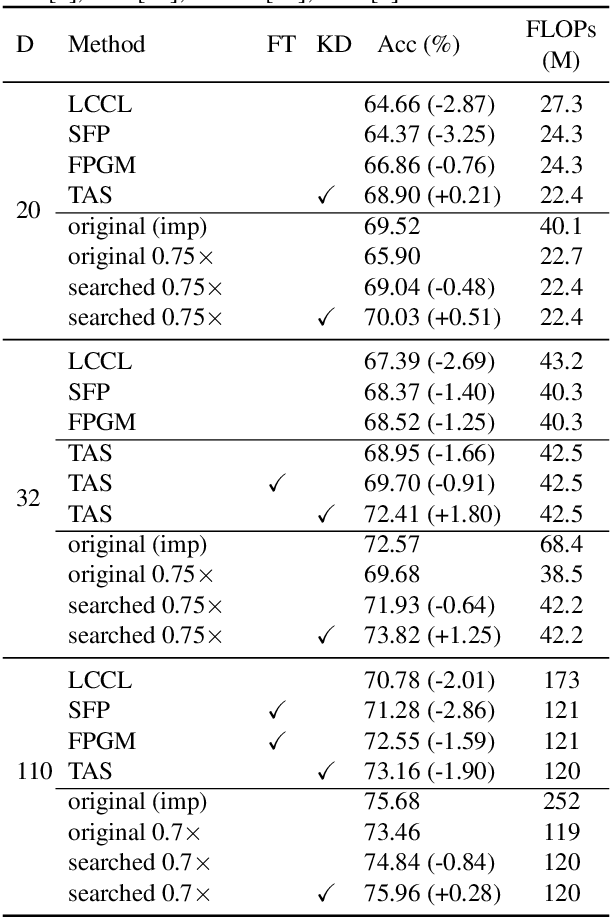
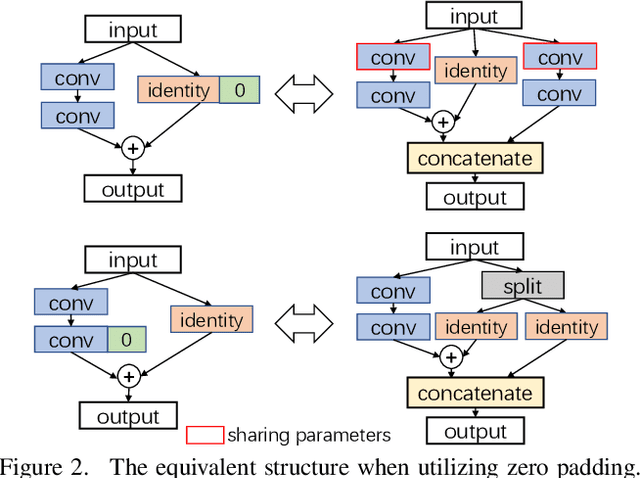
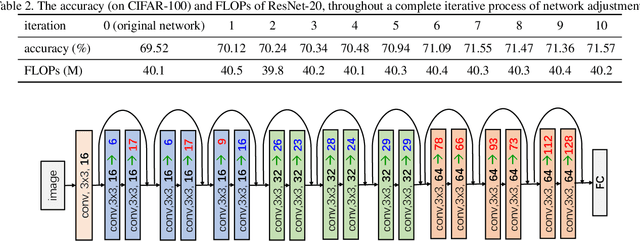
Abstract:Automatic designing computationally efficient neural networks has received much attention in recent years. Existing approaches either utilize network pruning or leverage the network architecture search methods. This paper presents a new framework named network adjustment, which considers network accuracy as a function of FLOPs, so that under each network configuration, one can estimate the FLOPs utilization ratio (FUR) for each layer and use it to determine whether to increase or decrease the number of channels on the layer. Note that FUR, like the gradient of a non-linear function, is accurate only in a small neighborhood of the current network. Hence, we design an iterative mechanism so that the initial network undergoes a number of steps, each of which has a small `adjusting rate' to control the changes to the network. The computational overhead of the entire search process is reasonable, i.e., comparable to that of re-training the final model from scratch. Experiments on standard image classification datasets and a wide range of base networks demonstrate the effectiveness of our approach, which consistently outperforms the pruning counterpart. The code is available at https://github.com/danczs/NetworkAdjustment.
 Add to Chrome
Add to Chrome Add to Firefox
Add to Firefox Add to Edge
Add to Edge